
Rick Dangerous is a platform game developed by Core Design for the Acorn Archimedes, Amiga, Atari ST, Amstrad CPC, ZX Spectrum, Commodore 64, and MS-DOS. The game was released in 1989 and published by MicroProse on the Firebird Software label in the UK, and on the MicroPlay label in America. It was also published in Spain by Erbe Software. Later, it was released with two other games, Stunt Car Racer and MicroProse Soccer, on the Commodore 64 Powerplay 64 cartridge. The game was followed by a sequel, Rick Dangerous 2, in 1990. Loosely based on the Indiana Jones film franchise, the game received mixed reviews from critics.
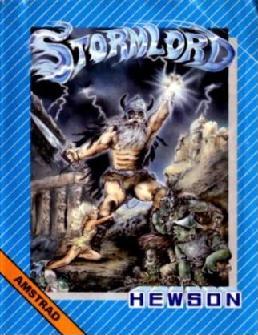
Stormlord is a platform game developed and published by Hewson Consultants in 1989. It was released for the ZX Spectrum, Commodore 64, Amiga, Atari ST, Amstrad CPC, and MS-DOS. It was ported to the Sega Genesis by Punk Development for Razorsoft and published in 1990.
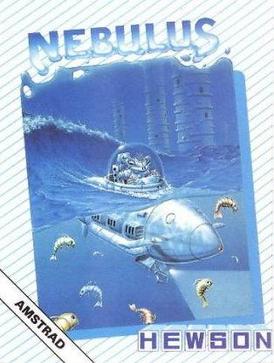
Nebulus is a platform game created by John M. Phillips and published by Hewson Consultants in the late 1980s for home computer systems. International releases and ports were known by various other names: Castelian, Kyorochan Land, Subline, and Tower Toppler.

Ranarama is a top-down Gauntlet-like action game developed by Graftgold and published by Hewson Consultants in 1987. It was released for the Amstrad CPC, Atari ST, Commodore 64 and ZX Spectrum home computers. The title appears to be a pun on rana, a genus of frogs. The game concept is similar to a previous game by Steve Turner for the ZX Spectrum called Quazatron, which was itself inspired by Paradroid, created by Turner's Graftgold colleague Andrew Braybrook.

Badlands is a 1989 arcade video game published by Atari Games. It was ported by Domark under the Tengen label to the Amiga, Amstrad CPC, Atari ST, Commodore 64, and ZX Spectrum. The game is a re-themed version of Atari's previous racing games Super Sprint and Championship Sprint with the addition of vehicular combat. Badlands is set in the aftermath of a nuclear war and races around abandoned wastelands with many hazards. Three gun-equipped cars race around a track to win prizes.
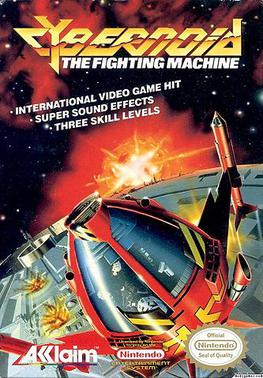
Cybernoid: The Fighting Machine is a shoot 'em up developed and published in 1988 by Hewson Consultants for the ZX Spectrum. It was ported to the Amstrad CPC, Atari ST, Commodore 64, Amiga, and Nintendo Entertainment System. It was programmed by Raffaele Cecco. The ZX Spectrum, Amstrad, and Atari ST versions have a main theme by Dave Rogers, while the Commodore C64 version has a different theme by Jeroen Tel.
Raffaele Cecco is a British video games developer who has created numerous video games since 1984, including Cybernoid and Exolon. He grew up in Tottenham in North London. Spurred by an interest in computers, he received his first computer, a Sinclair ZX81, as a birthday gift from his parents in 1981 and began programming simple games in BASIC.

Zynaps is a side-scrolling shoot 'em up video game published by Hewson Consultants for the ZX Spectrum, Amstrad CPC and Commodore 64 in 1987 and for the Atari ST in 1988 and the Amiga.

SWIV is a vertically scrolling shooter released in 1991 for the Amiga, Atari ST, Commodore 64, MSX, ZX Spectrum, and Amstrad CPC computers. A Game Boy Color conversion was published in 2001.
David Lowe also known as "Uncle Art" is a British composer known for his work on computer games from 1985 to 1998.
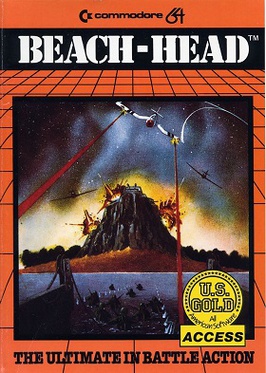
Beach-Head is a video game developed and published in 1983 by Access Software for the Atari 8-bit computers and Commodore 64 in the US. Versions for the ZX Spectrum, BBC Micro, and Acorn Electron were published in Europe by U.S. Gold in 1984, followed by versions for the Amstrad CPC, Commodore 16 and Plus/4 in 1985.

Indiana Jones and the Temple of Doom is an action game developed by Atari Games and released in arcades in 1985. It is based on the 1984 film of the same name, the second film in the Indiana Jones franchise. It is the first Atari System 1 arcade game to include digitized speech, including voice clips of Harrison Ford as Indiana Jones and Amrish Puri as Mola Ram, as well as John Williams's music from the film.
Addictive Games was a UK video game publisher in the 1980s and early 1990s. It is best known for the Football Manager series of games created by company founder Kevin Toms. The company was originally based in Milton Keynes, England, and later relocated to Bournemouth, in southern England.

Deliverance: Stormlord II is a 1990 platform game developed and published by Hewson Consultants in 1990 for the Amstrad CPC, Commodore 64 and ZX Spectrum as a sequel to the 1989 game Stormlord. Its remake for the Amiga, Atari ST, and Macintosh, titled Deliverance, followed in 1992.
Tiertex Design Studios Limited was a British software development company and former video game developer based in Macclesfield, England; it was founded in 1986, focusing on porting games to home computers and handheld platforms.
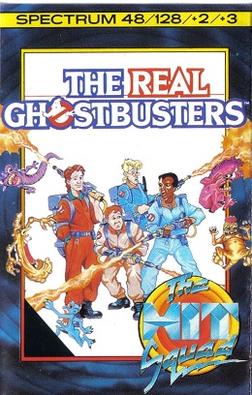
The Real Ghostbusters is a 1987 shoot 'em up arcade game developed and published by Data East. It is loosely based on Ghostbusters. In Japan, Data East released it as a non-Ghostbusters arcade game under the title Meikyuu Hunter G. In 1989, Activision published The Real Ghostbusters for Amiga, Amstrad CPC, Atari ST, Commodore 64, and ZX Spectrum.
Bubble Bus Software was a publisher of video game software for home computers in the mid-1980s, founded by Mark Meakins and based in Tonbridge, Kent. Their releases targeted popular home computers of the time, such as the Commodore 64, VIC-20 and ZX Spectrum. Their most notable releases were Starquake and Wizard's Lair, both written by Stephen Crow. Wizard's Lair was notable for its similarity to both Atic Atac and Sabre Wulf.

Joe Blade is a video game published by Interceptor Micros on their Players budget label for the ZX Spectrum, Commodore 64 and Amstrad CPC in 1987. It reached the top of the UK game charts, replacing Renegade. In Germany, the game peaked at number 7. It was ported to the Acorn Electron, BBC Micro, Atari 8-bit computers, MSX, Amiga, and Atari ST. A sequel, Joe Blade 2, was published in 1988. Another sequel, Joe Blade 3, was released in 1989.













